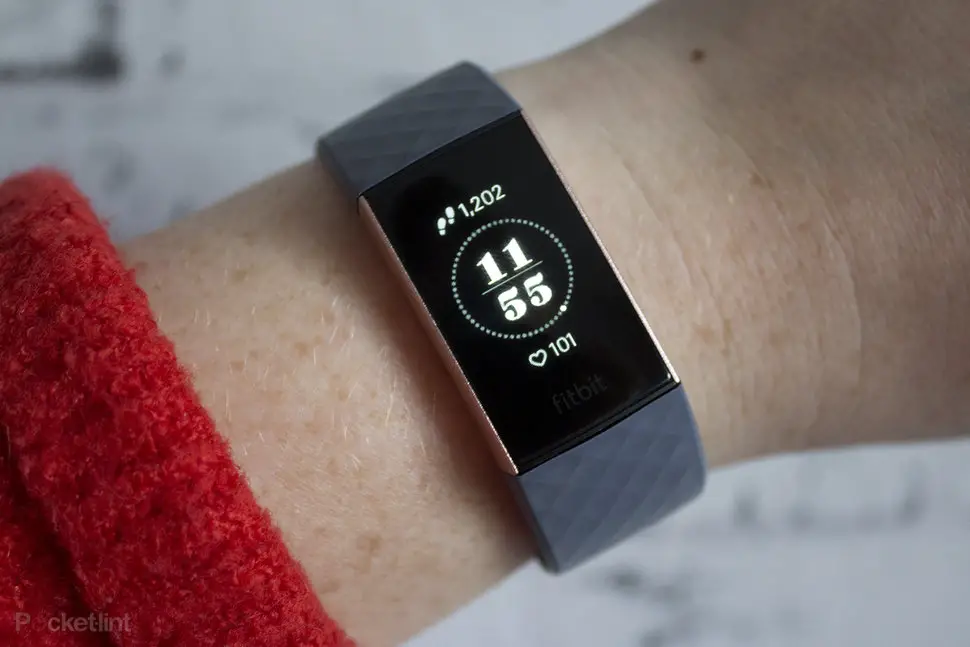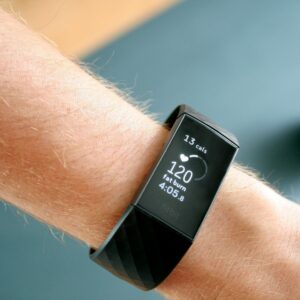
The Fitbit Charge 3 is roughly equivalent to Fitbit has come to combine its smartwatches with its more basic fitness tracking devices. This is because it has received a significant upgrade over the Fitbit Charge 2, which was fairly basic in terms of smart functionality.
Consider how the device can now give you lots better alerts from all of the third-party apps on your phone, which the Charge 2 couldn’t because it could only alert you to phone calls and text messages. It also comes with a slew of new features, such as timers and weather.
The Charge 3 includes all of the general multi-sport fitness tracking features you’d expect from a Fitbit activity tracker, including old favorites from the Charge 2, such as 24/7 pulse rate tracking, workouts, and guided breathing for relaxation, as well as some new additions, such as swim tracking.
Aside from swimming, the Charge 3 tracks outdoor running, treadmill running, walking, and weightlifting, as well as cycling and interval workouts, as seen on the Charge 2.
If you recently purchased a Fitbit Charge 3 and are wondering how to set it up so that you can begin tracking and setting goals for your fitness journey, you’ve come to the right place. This article will guide you on how to go about setting up your new smartwatch.

How do I configure my Fitbit Charge 3?
If you already have a Fitbit account, sign in and go to the account icon > Set Up a Device. If you don’t already have a Fitbit account, tap Join Fitbit to be guided through a series of questions to set one up. 5. Follow the on-screen instructions to link Charge 3 to your account.
How to Configure a New Fitbit Charge 3
Have you recently purchased a new Fitbit Charge 3? Here’s how to do it in a matter of minutes with an Android phone!
First and foremost, if you don’t already have the tracking application installed on your phone, you’ll need to download the Fitbit app to your phone. To accomplish this, first:
- On your phone, launch the Google Play Store app.
- Look for Fitbit in Google play search area.
- Wait for it to download by tapping Install.
How to Configure Your Fitbit Charge 3
- Open your phone’s Fitbit app and select Join Fitbit or Log in.
- To log in, enter your email address and password, or fill out the form to create a new account.
- Check the box next to Location Permissions.
- Allow the pop-up to appear.
- Select the Account option (the one at the top right that looks like an ID card).
- Setting up a Device is the next option.
- Select Charge 3 from the menu.
- Setup Your Fitbit Charge 3.
- Scroll down and press the “I Agree” button.
- Connect your Charge 3 to the charger and then follow the on-screen instructions by tapping Next.
- Enter the numbers displayed on the Charge 3’s screen.
- Select Install Update Now.
- Allow enough time for the update to download and install.
- When it’s finished, tap Continue.
- To proceed, follow the on-screen instructions and tap Next on each page.
- After you’ve completed all of these steps, tap Done.
- To accept connectivity features, tap Okay.
After you’ve completed all of the steps above, you’ve successfully set up your Fitbit Charge 3 on your device. Now go out there and work up a sweat!
Important Fitbit Charge 3 Features to Look out for
The Application
iOS and Android devices are supported by the app.
The app is really thorough and easy to use.
The Fitbit platform hasn’t changed much since we reviewed the Versa, and it’s still as great as it was back then. It’s straightforward, easy to comprehend, and everything is simple to manage. Fitbit The Charge 3 syncs through Bluetooth, which is far faster and smoother than comparable apps like Withings Health Mate.
We used the Android app to evaluate the Charge 3, but it’s also available on iOS. The Fitbit app has five primary sections on the home screen: Dashboard, Account, Challenges, Guidance/Notifications, and Friends.
The primary dashboard displays all of the data collected for each day in tile style, making it easy to modify the order of what you want to see. It includes everything from food and water intake (if entered) to the number of steps performed.
Each measured metric has a circular bar above it that turns clockwise as you get closer to a target, making it easy to determine if you need to move faster. Each of these metrics can be tapped to see more information about it.
The Account option, which can be located at the top right of the app and is where you can adjust goals, set up another Fitbit tracker, and access additional settings like adding a custom heart-rate zone is another significant page.
There’s also a link to see what other Fitbit-compatible applications you have, such as MyFitnessPal, which is ideal for diet tracking. This option also allows you to change the Charge 3’s display design, quiet alarms, and main aim, among other things.
Sleep monitoring
- Monitors REM, light, and deep sleep.
- There is also a silent alarm.
The Fitbit Charge 3 brings back sleep tracking, giving you a glimpse into your night with details on REM, light, and deep sleep.
We found the wearable to be sufficiently comfortable while sleeping, but we didn’t always want to wear it to bed, as Fitbit recommends.
You never know how well a sleep tracking device has tracked you, but what the Charge 3 recorded for us seemed about right.
There’s also a silent alarm mode, which gently vibrates the tracker on your wrist to wake you up without disturbing anyone nearby. It’s a nice idea, but we’re not sure how useful it will be for heavy sleepers.
Life of the battery
You should be able to use it for at least six days.
If you wish to use sleep monitoring, it’s difficult to recharge.
Fitbit claims that the Charge 3’s battery would last seven days, compared to five days for the previous Charge 2 wearable. We discovered that we didn’t quite make that goal, even though we were testing the gadget extensively.
However, we believe that if you don’t use the fitness-tracking and smart features more than once a day, you’ll be able to reach close to the seven-day predicted battery life.
We got about six days of use out of our fully charged Charge 3, which isn’t terrible considering you’d only be recharging the device once a week.
The Fitbit Charge 3 comes with a proprietary charger included in the box. We would have preferred it to use a more conventional micro USB or USB-C connection charger, as it frequently ran out when we didn’t have access to a charger.
Another challenge is figuring out when the best time is to charge the device. The most obvious time to charge a wearable or phone is overnight, but you won’t be able to wear the Charge 3 to bed to track your sleep. So you’ll need to schedule a time when you won’t be tracking anything so you can re-juice it.
Thankfully, the Charge 3 displays a percentage of battery life on the gadget, so a low battery won’t catch you off guard. This feature may be commonplace now, but it wasn’t available when the Fitbit Charge and Fitbit Charge HR were first announced.





Leave a Reply